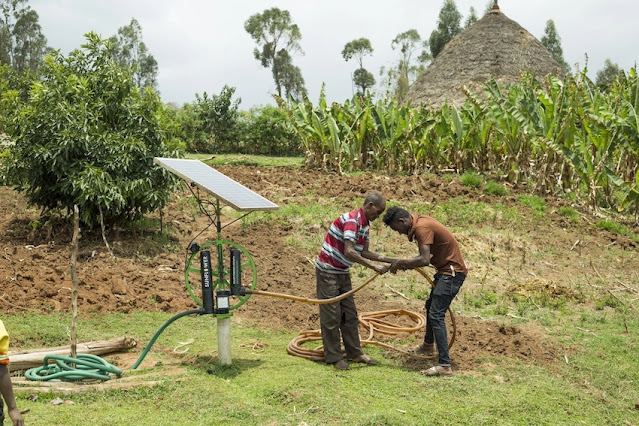Anthropogenic climate change exacerbates an unequal range of hydrological variability worldwide. It is difficult to declare with certainty how rainfall patterns (how much, when, and where) will look under any given climate change scenario. An element that scientists can agree on is that since the 1960s precipitation globally is becoming more intense but more temporally sparse (Myhre, et al., 2019). This variability is quantified and discussed in terms of ‘coefficient of variation’ which tells us within how many percent above or below the mean annual rainfall an area can expect to receive. As an illustrative example, in the UK the median figure is between 5-20%, globally, 31%, while in Africa it is 82% (McMahon et al, 2007).
Location, location, location…
Tropical Africa as a climatic region and a population, is inherently disproportionately impacted by the changes to rainfall. More sporadic precipitation leads to more drying out of soil in-between events, which in turn reduces the soil’s capacity to absorb water when the rain does come. In this way, extreme seasonal rainfall often leads to recharge of groundwater stores through infiltration (a noteworthy information for a later paragraph). Studies have shown that the same total amount of annual rainfall results in higher or lower crop yields, depending on whether the rainfall was frequent or sparse, respectively (Challinor et al., 2006). Recalling from last post, tropical Africa heavily relies on rain-fed cultivation, with only some 5% of cropland under irrigation (Xie et al., 2021. Climate change- induced rainfall variability, compounded with ‘at least a 3.5-fold’ (Gerland et al., 2014) population increase, renders this current mode of food production unviable for the future.
‘Irrigation expansion is seen as a significant leverage to food security (…) especially in SSA’ and groundwater is seen as a ‘buffer’ against climatic hydrological variability. Currently, only 1% of irrigated cropland in Africa makes use of groundwater (Altchenko and Villholth, 2015). Given the success of low-tech projects, such as the ‘Bengal Water Machine’ (Shamsudduha et al, 2022), coupled with the aquifer recharge side effect of extreme rainfall events, groundwater irrigation could be key, if not THE key, in quest for food security.
Down-under…Ghanaian ground
The extent of groundwater availability in Ghana is poorly estimated, which creates a perception groundwater being sufficient only for domestic use and the potential for irrigation is overlooked by policymakers. In the Upper East Region of Ghana in the watershed of the White Volta Basin, about 90% of horticulture farmers use shallow groundwater for irrigation during the dry season, accessed through seasonal riverine and in-field, as well as permanent wells. Practicing irrigation under current technologies is very labour intensive and is often only made profitable for smaller farms by involving unpaid household members. A 3-4 month long dry season creates a demand for an equivalent of 214 additional full-time jobs. There is a need for implementation of more advanced technology to improve efficiency and the profitability of cultivation of a wider range of crops, not least to accommodate climatic changes. Nonetheless, the economy of the White Volta Basin watershed communities is estimated to have gained $1.1 million and increase food security, thanks to shallow groundwater irrigation. Studies has demonstrated that there exist sufficient groundwater stores for further expansion (Namara et al., 2011).


Comments
Post a Comment